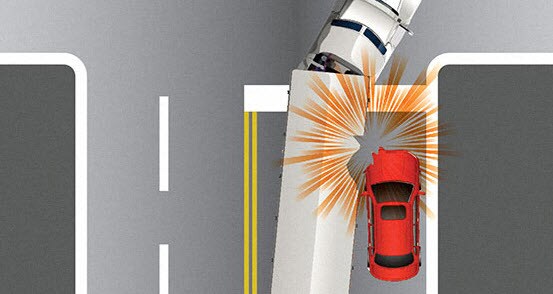
Whether on the freeway or street, most everyone's got a story about how they narrowly escaped getting into an accident with an 18-wheeler, and usually people fault the truck driver without realizing that they may have caused the problem.
Every year, thousands of passenger cars are involved in collisions with semi-trucks, so it's imperative to learn how to share the road. Avoid these behaviors if you want to prevent getting into a potentially fatal accident.
Changing lanes. Let's face it: In many cases, when a driver sees the truck next to them flash a turn signal, it normally incites a reaction to speed up and pass the truck. This is very dangerous, so instead one should leave room for the truck to merge and even flash their headlights to indicate that they're willing and ready to let the truck change lanes.
Cut-offs. An 18-wheeler is going to take more time to brake than your average car or SUV, about three times longer to be exact, so cutting one off and then slowing down in front of it is a bad move. As a matter of fact, the No. 1 cause of crashes involving large trucks has to do with their inability to stop in time when motorists cut them off.
Blind spots. Cruising along in a truck's blind spot is incredibly unsafe and it's another one of the most common causes of accidents involving big rigs. If you cannot see the truck driver, it's very likely that he or she cannot see you, so make sure you pass swiftly.
In addition to the three driving behaviors listed above, another frequent cause of semi-truck collisions is something called the "right turn squeeze" (see image below). Trucks make wide turns, so if you see one in the middle lane with its right blinker on, do not drive up to the side. And, even if a truck doesn't have its blinker on, it's a good idea to stay positioned at the rear of the trailer, just in case the trucker's signal light is inoperative, or at least make sure you pull up to a position where the truck driver can see you.
